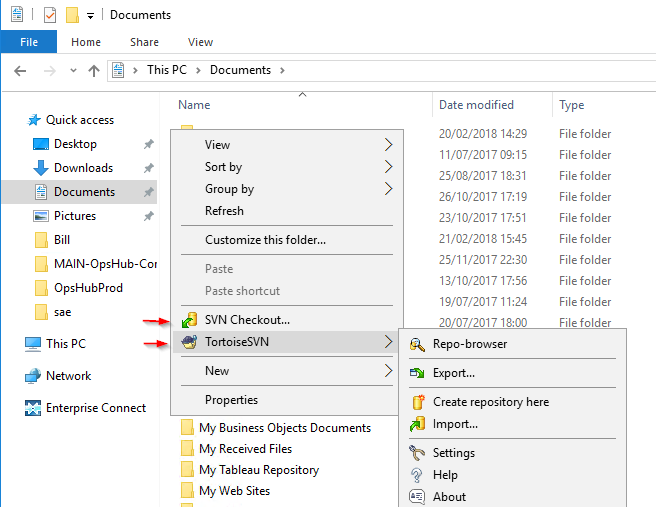

- #Add existing project to visualsvn how to#
- #Add existing project to visualsvn install#
- #Add existing project to visualsvn upgrade#
- #Add existing project to visualsvn code#
- #Add existing project to visualsvn download#
If your Project uses Lit Shaders from the Built-in Render Pipeline, you must convert those Shaders to URP Shaders. When you add the Universal Render Pipeline Asset, the available Graphics settings immediately change.
#Add existing project to visualsvn code#
Initially your code will be stored in the trunk folder. When VisualSVN creates new repository it creates the default repository structure with branches, tags and trunk folders. Let us consider a few important actions to understand this. VisualSVN can add your code to a new or an existing repository. In this section, we will understand how Subversion works in IntelliJ.

The rendering pipeline instance contains intermediate resources and the render pipeline implementation.

The Universal Render Pipeline Asset controls the global rendering and quality settings of your Project, and creates the rendering pipeline instance. Creating the Universal Render Pipeline Asset
#Add existing project to visualsvn upgrade#
To do this, you need to create a Scriptable Render Pipeline Asset and adjust your Graphics settings. All VisualSVN 7.x licenses are eligible for a free upgrade to VisualSVN 7.3. Unity installs URP directly into your Project.īefore you can start using URP, you need to configure it.
#Add existing project to visualsvn install#
If you have the Post Processing Version 2 package installed in your Project, you need to delete the Post Processing Version 2 package before you install URP into your Project. URP uses its own integrated post-processing solution.
#Add existing project to visualsvn how to#
If you don’t have an existing Project, see documentation on how to start a new URP Project from a Template.
#Add existing project to visualsvn download#
You can download and install the latest version of the Universal Render Pipeline (URP) to your existing Project via the Package Manager system, and then install it into your Project. Your project has been added to SVN server successfully.Installing the Universal Render Pipeline into an existing Project Here is a sample which about how to add a project to SVN server using VisualSVN plugin in Visual Studio 2013.Īll steps suppose you have installed VisualSVN plugin.ġ: Right click the solution name in Visual Studio 2013, select "Add Solution to Subversion…":Ģ: Confirm which folder you want to add to SVN server, normally you do not need to change:ģ: Normally you will select a New Repository, but since we have already created a repository on SVN server manually previously, so we select Exist Repository for our case:Ĥ: We gave the existing repository’s URL, if you choose the default URL, you can see it created a trunk folder for you, which means this is trunk branch:ĥ: Confirm windows, you review all the settings and click Import button:Ħ: Finish screen. Before we were using AnkhSVN plugin in Visual Studio, but sometimes we got unknown issues when we have multiple team members, so later we changed to VisualSVN plugin, we feels the new one is more stable.


 0 kommentar(er)
0 kommentar(er)
